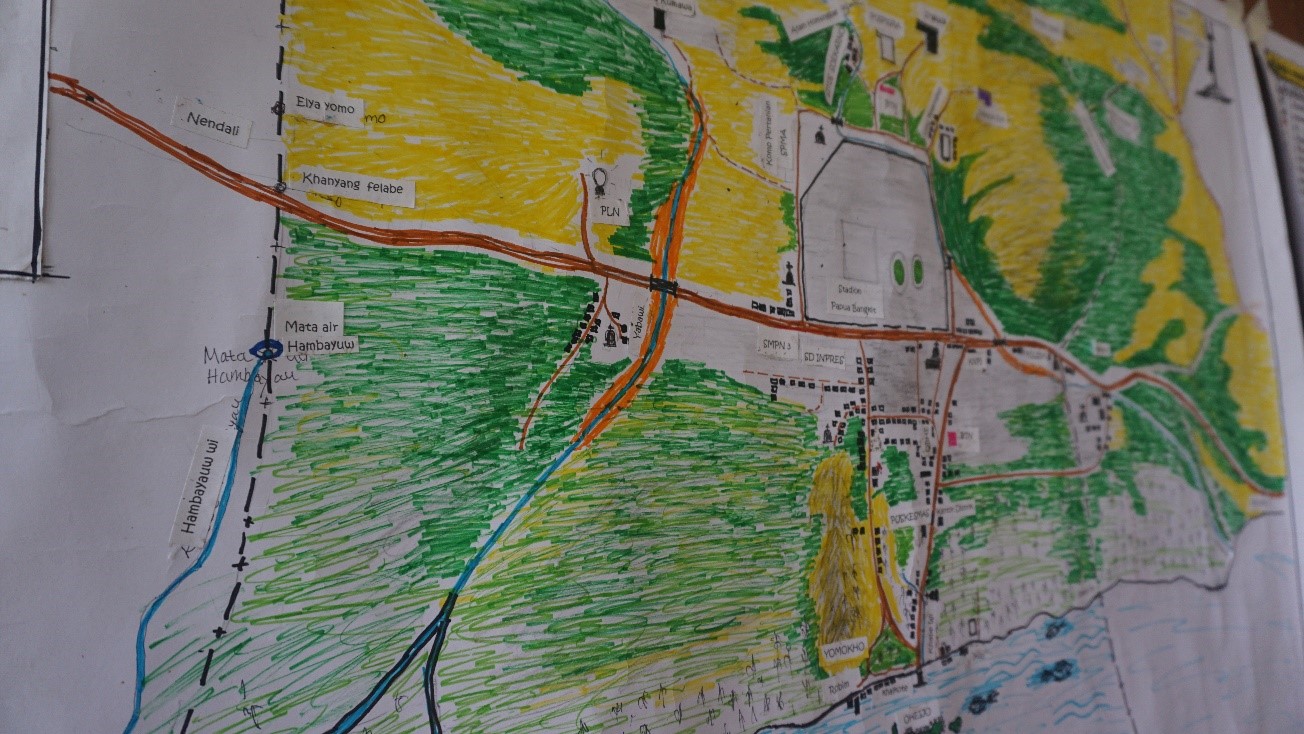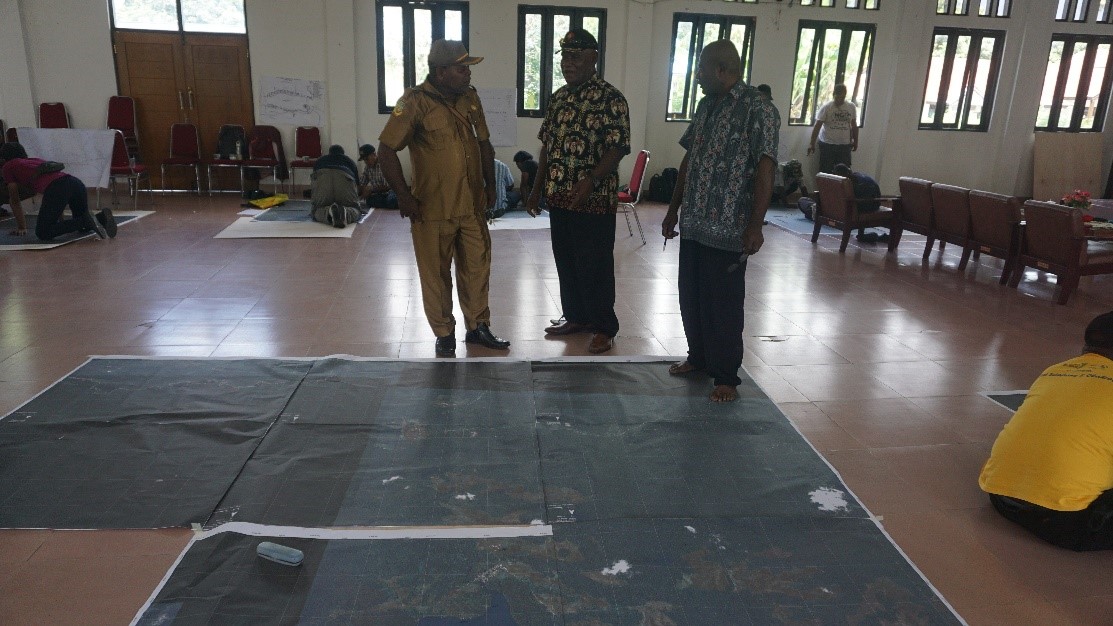Participatory Mapping, the Key for an Inclusive Development at the Local Level
By: Hendrika Tiarma Wulandari, WRI Indonesia researcher
As the population and community needs grow, local governments are forced to continuously come up with new development programs. To be effective, the real condition on the field has to be considered in the planning of these programs, including physical condition of the area as well as the social, economy and cultural condition of the local community. Maps can help capture these aspects more clearly.
For development planning in customary areas, local governments need to draw a map of customary areas to capture the local-wisdom-based management, utilization and control of lands to understand current dynamics at the local level. Drawing a map of customary areas through participatory mapping method would encourage the local indigenous communities’ active involvement in putting their knowledge on the space in which they live, to map.
These are some of the advantages of participatory mapping compared to other mapping methods.
1. More detailed spatial information
Map is a documentation of the state of an area in terms of borders as well as control, utilization and management within the area. With the direct involvement of the community - such as providing basic sketches of their spatial knowledge, including the customary norms used in the management of the area, the map can cover all community information on spatial management of the area along with the local wisdom governing it. This is crucial as the resulting map is intended to inform local governments’ policies, which have to consider the interest of the community.
Data collection at the local level is also an opportunity for the community to collect information on local custom, culture and practice that are mostly undocumented or entirely lost. This would allow for knowledge on customary spatial management to be passed down to the younger generation.
 Basic sketch of the Asei Hamlet. Photo credit: Hendrika Wulandari/WRI Indonesia
Basic sketch of the Asei Hamlet. Photo credit: Hendrika Wulandari/WRI Indonesia
2. Making an effective and efficient collaboration possible
With excellent collaboration, customary area map can be created more effectively and efficiently in the use of resources. To properly capture the community’s spatial knowledge, the support of research institutions, academics and NGOs is needed to formulate theoretical framework and methodology. This covers compliance with government regulations, such as the Regulation of the Geospatial Information Agency No. 12 of 2017 on Guidelines for the Mapping of Indigenous Community Areas. The involvement of local governments is then needed to make sure that the products generated at the local level are actually used in the formulation of local policies.
For example, the Jayapura Regency has established the Indigenous Community Task Force based on the Decision Letter of the Jayapura Regent No. 188.4/ 266 of 2018. The task force facilitates the participatory mapping of customary areas in the Jayapura Regent through identification, verification and validation of indigenous communities and customary areas. The collaboration among the local government, academics and NGOs was able to accelerate the customary area mapping in Jayapura Regency.

3. An opportunity for knowledge sharing with local communities
The participatory mapping organized by the Jayapura Regency’s task force was done in several workshops. The workshops provided trainings to the local community on methods of social and spatial data collection in the hamlet, delivered by the Papuan NGO Forum, Ancestral Domains Registration Agency, Indigenous Peoples Alliance of the Archipelago, Participatory Mapping Network and WRI Indonesia.
The workshops also provided information on customary area management to broaden the perspective of the locals. This is crucial considering that local communities have limited access to information.
4. Settlement of issues concerning local-wisdom-based customary area borders
The Special Regional Regulation No. 23 of 2008 on Customary Land Rights and Individual Land Rights of Indigenous People prescribes that approval for customary borders must be signed by the authorized customary leader, the head of the research and the relevant district and hamlet heads.
Participatory customary area mapping that heavily involves the community will make this easier. A local-wisdom-based mechanism is highly effective and efficient in resolving customary border issues as kinship continues to be a key value upheld by local communities.
5. A tool for planning and recognition
Drawn in collaboration with the locals, the maps are produced through an inclusive process and therefore, are more accepted. As such, they can be used as a tool in development planning, sustainable natural resources utilization and local cultural preservation. Participatory map can also be used to provide formal recognition to customary areas for the sustainable protection of indigenous communities.
Learning from the participatory mapping in the Jayapura Regency, participatory mapping offers many advantages and must be applied in other areas to address challenges in making policy that is actually based on real conditions at the local level.